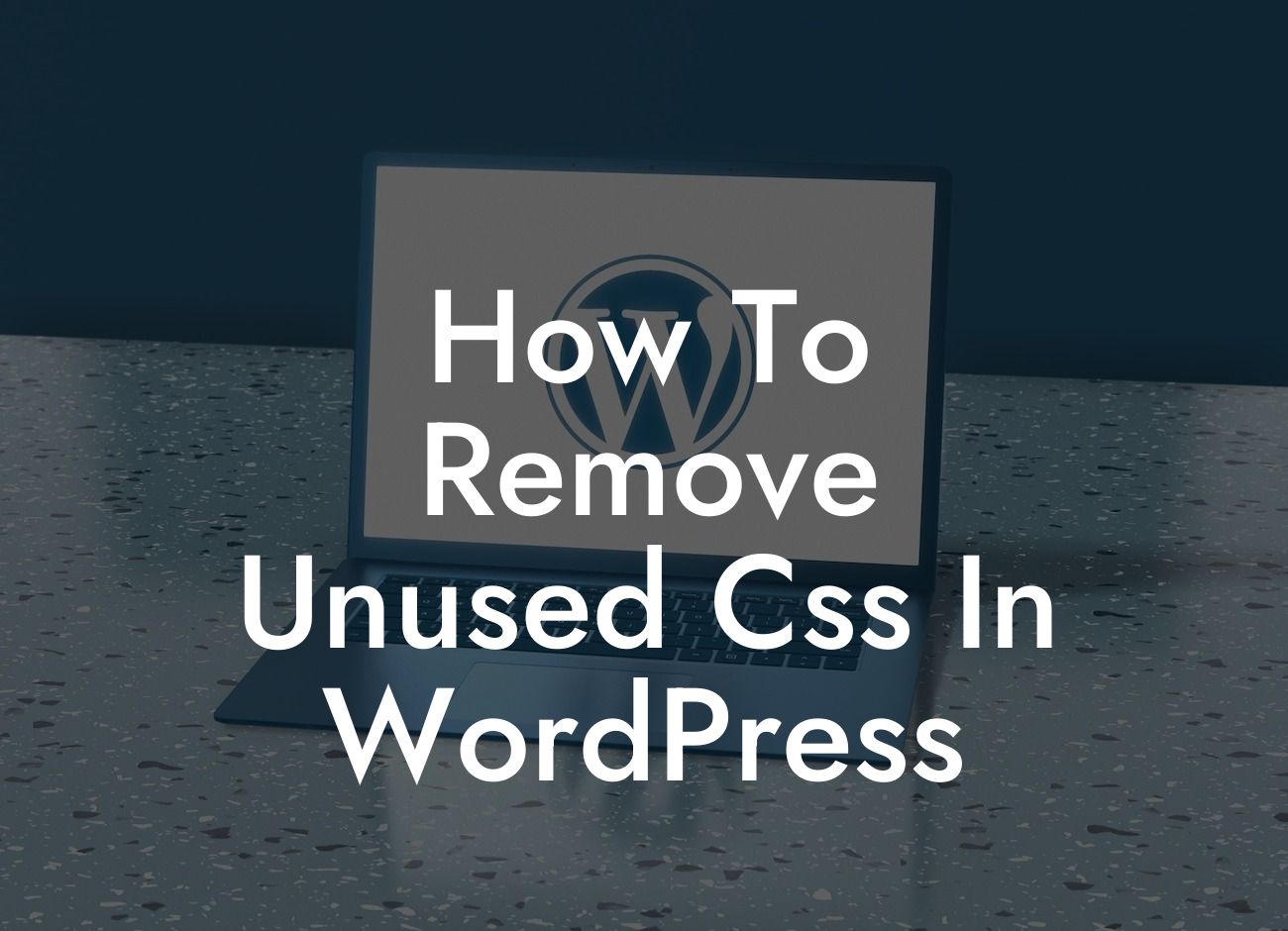Unused CSS can slow down your WordPress website and affect its performance. As a small business or entrepreneur, you need your website to load quickly and smoothly for your visitors. In this blog post, we will guide you through the process of removing unused CSS in WordPress, helping you optimize your website's speed and improve user experience.
Unused CSS can accumulate over time as you install different themes and plugins, making your website load extra code that is unnecessary. This excess code can lead to slower loading times, which can be frustrating for your visitors and negatively impact your search engine rankings. To address this issue, follow these steps to remove unused CSS:
1. Audit your website: Before you can remove unused CSS, you need to identify which code is no longer in use. There are tools available, such as Google Chrome's Lighthouse or extensions like UnusedCSS, that can help you identify and analyze unused CSS on your website.
2. Use a performance optimization plugin: To automatically remove unused CSS from your WordPress website, consider using a performance optimization plugin like Asset CleanUp or WP Rocket. These plugins analyze your website and disable or remove unnecessary CSS and JavaScript files, improving your page loading speed.
3. Manually removing unused CSS: If you prefer a more hands-on approach, you can manually remove unused CSS from your WordPress theme. Start by identifying the CSS files that are loaded on your website. You can find these files by inspecting your web page and looking for references to CSS files in the source code. Once you have a list of CSS files, use a code editor to search for selectors that are not being used within your website's pages.
Looking For a Custom QuickBook Integration?
4. Optimize your theme and plugins: Some WordPress themes and plugins load unnecessary stylesheets by default. It's important to review your theme and plugin settings to disable features and styles that you don't need. This will help reduce the amount of unused CSS being loaded on your website.
How To Remove Unused Css In Wordpress Example:
Let's say you have a WordPress website for your small business selling handmade jewelry. Over time, you've installed different themes and plugins to enhance your website's functionality. However, these additions have left behind unused CSS, slowing down your website. By using a performance optimization plugin like WP Rocket, you are able to automatically remove the unused CSS files, resulting in faster loading times for your website. As a result, your visitors have a better browsing experience, leading to increased sales and customer satisfaction.
By removing unused CSS from your WordPress website, you can optimize its speed, improve user experience, and boost your search engine rankings. Don't let unnecessary code slow down your online presence. Say goodbye to sluggish loading times and start embracing the extraordinary with DamnWoo! Explore our guides to further enhance your website's performance and try our awesome WordPress plugins designed exclusively for small businesses and entrepreneurs. Don't wait - supercharge your success today!













